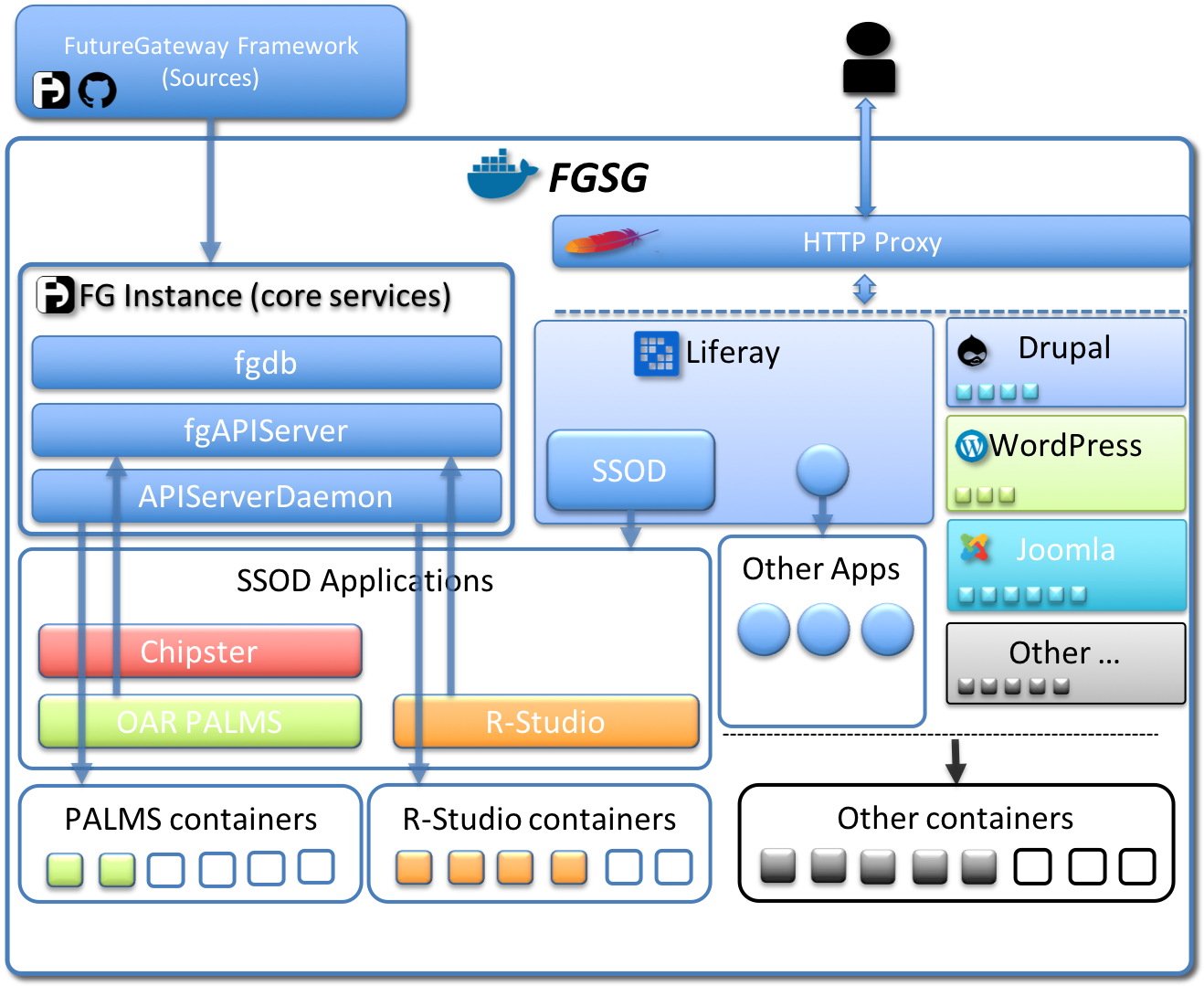FutureGateway Science Gateway
About
In the context of the EOSC-hub project, has been developed the FutureGateway Science Gateway (FGSG), an environment capable to host one or more Science Gateways fully exploiting the capabitilies of the FGF in conjunction with containerised virtualisation system offered by Docker. Latest developments in the FGF, have been principally focused in the installation process, making the FG components higly configurable and thus facilitating the maintenance of the running services. The use of virtualised environments, in this particular case with Docker, provided a huge improvement while targeting these objectives.
FGSG Architecture
The image below explains the overall architecture. The whole FGSG is served by a single slot of an IBM Blade Center X series, this unit provides 32 cores, 128GB of RAM and 150 GB of disk space controlled on board in RAID-1 mode. An external storage solution, complete the cinfuguration providing an external disk space of 5TB. On top of this hardware environment a Docker container server has been installed on top of an Ubuntu 18.04. Using the Dockerised installation, FG core services have been isntalled, in particular:
- fgdb - The FG database component
- fgapiserver - The FG RESTful API server
- apiserverdaemon - The API server daemon in charge of target DCIs.
The containerised environment easily provides a common and isolated network among these services and a dedicated volume providing the necessary shared filesystem between the fgpapiserver and apiserverdaemon. The apiserverdaemon provides the standard Executor Interfaces: (Grid and Cloud Engine and Tosca-IDC). At the moment all applications are using the Grid and Cloud Engine targeting the JSAGA SSH adaptor. In most of the cases the SG applications are pointing to a special account of the FGSG itself in order to execute Science Gateway applications, in particular while exploiting Docker container to start services.

FGSG Services
Beside the FutureGateway core services, three more services have been installed, still in a containerised mode. In particular:
- http Proxy server - An Apache HTTP proxy server which exposes FGSG hosted SGs, using different namespaces, host certificates, scalability, etc.
- FG Liferay - Although FG is portal independent, in its early phases it officially used Liferay portal service as suggested web environment. This is still maintaned, also because there are several tools and libraries developed during INDIGO-dc european project requesting this environment. The FGSG has been developed to serve a web portal who could host these services, for this reason a Liferay bases SG has been adopted as default.
- SSH Node - The SSH node is a container used to isolate SG applications from the FGSG environment. This node has been used principally for test purposes at the moment.
Beside the services above, two more containers are hosting the INFN Science Gateway created to serve the INFN.

Leave your comments
Back to the main news page.